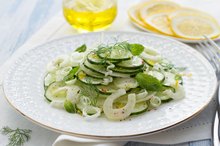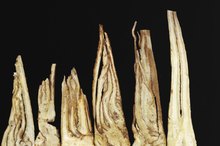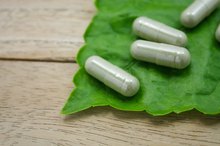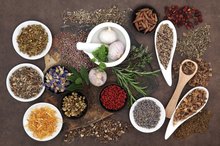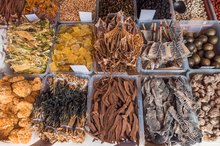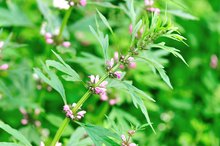What does fact checked mean?
At Healthfully, we strive to deliver objective content that is accurate and up-to-date. Our team periodically reviews articles in order to ensure content quality. The sources cited below consist of evidence from peer-reviewed journals, prominent medical organizations, academic associations, and government data.
- Pharmacognosy Reviews: Ocimum sanctum Linn. A Reservoir Plant for Therapeutic Applications: An overview
- Pharmacognosy Reviews: Ocimum sanctum Linn. A Reservoir Plant for Therapeutic Applications: An overview
The information contained on this site is for informational purposes only, and should not be used as a substitute for the advice of a professional health care provider. Please check with the appropriate physician regarding health questions and concerns. Although we strive to deliver accurate and up-to-date information, no guarantee to that effect is made.
Holy Basil & Blood Pressure
Holy basil is a plant in the mint family known by several other names, including tulsi, Thai basil and monk's basil 1. The plant contains iron, calcium, vitamins A and C, and zinc. According to Drugs.com, holy basil historically has been used for upset stomachs, headaches and the common cold, but may also be an effective complementary treatment for high blood pressure 1. Always consult a health care professional before using holy basil 1.
If you are experiencing serious medical symptoms, seek emergency treatment immediately.
Scientific Studies
A study in the January 2012 issue of "Journal of Natural Remedies" examined the effects of a compound extracted from holy basil on metabolic syndrome, of which hypertension is a typical component 1. Participants who took 5 milliliters of the extract twice daily for three months dropped their systolic (top reading) blood pressure an average of 13 points, and diastolic (bottom reading) an average of eight points.(See Ref. 3) Another study in a 2009 issue of "Studies of Ethno-Medicine" concluded a combination of tulsi and neem leaf was beneficial to lower high blood pressure, along with ameliorating other symptoms of diabetes 3. An article on WebMedCentral.com concluded current data warrants further investigation of the beneficial health properties of holy basil and its active compounds 1.
Related Articles
References
- Drugs.com: Holy Basil
- Pharmacognosy Reviews: Ocimum sanctum Linn. A Reservoir Plant for Therapeutic Applications: An overview
- Studies on Ethno-Medicine: Effect of Supplementation of Tulsi ( Ocimum sanctum ) and Neem ( Azadirachta indica ) Leaf Powder on Diabetic Symptoms, Anthropometric Parameters and Blood Pressure of Non Insulin Dependent Male Diabetics
- WebMedCentral.com: Ocimum Sanctum (Tulsi): Bio-pharmacological Activities
- Cohen MM. Tulsi - Ocimum sanctum: A herb for all reasons. J Ayurveda Integr Med. 2014;5(4):251-9. doi:10.4103/0975-9476.146554
- Jamshidi N, Cohen MM. The clinical efficacy and safety of tulsi in humans: A systematic review of the literature. Evid Based Complement Alternat Med. 2017;2017:9217567. doi:10.1155/2017/9217567
- RX List. Holy basil. Updated June 18, 2019.
- RX List. Vitamins, Herbs, Dietary Supplements A-Z List. Holy Basil. RxList.com. Updated June 18, 2019
- Drugs.com. Holy basil. Updated January 1, 2019.
- Rindels, S. Basil. Iowa State University, Horticulture and Home Pest News. Updated March 21, 1997
- Cohen MM. Tulsi - Ocimum sanctum: A herb for all reasons. J Ayurveda Integr Med. 2014;5(4):251-9. doi:10.4103/0975-9476.146554
Writer Bio
K.T. Parker is the author of multiple fiction novels and many articles, mostly about health topics. Her education in nutrition augments her pursuit of a degree in Naturopathy.
